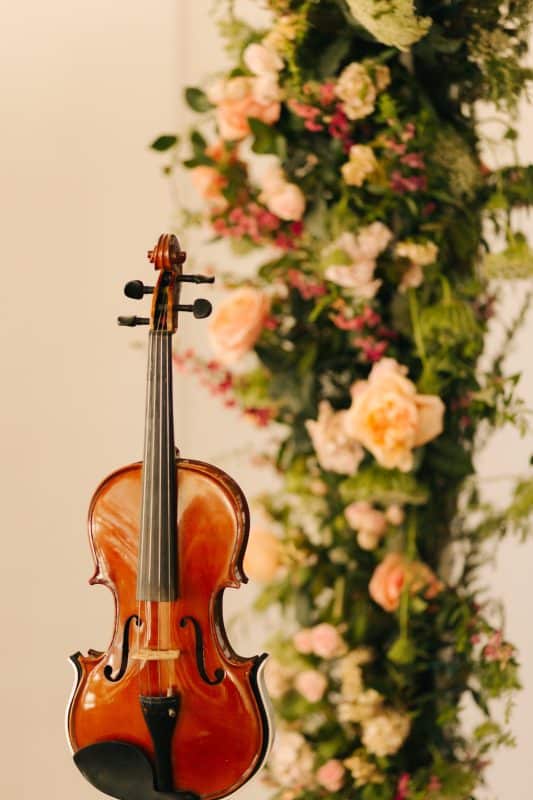Playing the violin at a wedding is not just about delivering music; it’s about creating an atmosphere that enhances the beauty and emotion of the occasion. For wedding violinists in the UK, understanding the intricacies of performance can transform a simple melody into an unforgettable experience.
This blog post delves into practical advice for violinists, drawing on expert insights to help refine your craft and avoid common pitfalls.
Getting to Know the Venue
Acoustic Characteristics
Each venue carries its own set of acoustic properties. Whether performing in an expansive hall or a cozy garden, familiarizing yourself with the sound dynamics of the space is crucial. This understanding will guide you in modulating your playing to suit the environment perfectly.
Venue Layout
The physical layout, whether it’s an intimate indoor setting or a sprawling outdoor venue, will influence your performance setup. Consideration of space is essential for planning your positioning and any necessary amplification to ensure your music is heard clearly and pleasantly.
Choosing the Right Music
Audience Considerations
A well-thought-out playlist that aligns with the couple’s preferences and appeals to the guests’ varied tastes is vital. A repertoire that spans classical to contemporary, with room for personal requests, will resonate more deeply with all in attendance.
Adaptability
Being able to adjust your music selection on the fly is a valuable skill. The ability to accommodate personal requests not only personalizes the experience but also showcases your versatility and commitment to making the day special.




Performance Enhancements and Corrections
Holding the Violin Correctly
A common oversight is playing with the violin positioned too low, which can hinder sound projection and quality. Maintaining the violin at a level between your nose and eye ensures better control and a richer sound output.
Proper Shoulder and Instrument Alignment
Misplacing the violin on the shoulder can lead to discomfort and affect sound production. Positioning the violin at a 45-degree angle between your chest and shoulder facilitates a more natural and effective playing posture.
Reducing Left Shoulder Tension
Excessive tension in the left shoulder not only impacts your performance but can lead to physical strain. Regularly practicing relaxation and posture exercises can help alleviate this tension, leading to a more comfortable and sustainable playing experience.
The Importance of Keeping Your Eyes Open
While it might feel natural to close your eyes to concentrate or express emotion, doing so can detract from your performance. Keeping your eyes open aids in intonation accuracy and enhances your connection with the audience, making your performance more engaging.
Practicing as You Will Perform
Adapting your practice sessions to mirror the actual performance environment can significantly improve your readiness. This includes practicing in both standing and seated positions to match the performance context, ensuring you’re comfortable and prepared for any setting.
Refining Your Bow Grip
A shallow bow grip can lead to a weaker sound. Focusing on developing a firmer, more controlled grip will enhance the depth and richness of your music, making your performance more impactful.
Managing Right Shoulder Tension
A raised right shoulder can restrict your bowing motion and lead to tension. Practicing with a focus on keeping your shoulder relaxed and down will improve your bow control and overall sound quality.
Avoiding a Locked Elbow
A flexible bowing arm, free from stiffness, allows for smoother and more expressive playing. Ensuring your elbow isn’t locked but instead moves fluidly with your bow strokes will enhance the musicality of your performance.
Minimizing Left Hand Tension
Tension in the left hand can affect finger placement and vibrato, leading to intonation issues. Working on keeping your hand relaxed, with a natural curve to the fingers, will improve your agility and the clarity of your notes.
The Pitfall of Mindless Practice
Practicing without focus or intention can reinforce bad habits and limit your improvement. Setting clear goals for each practice session and actively working on areas of difficulty will make your practice time more productive and rewarding.
Wrapping Up
The role of a wedding violinist is a privileged one, offering the opportunity to add a layer of magic to an already special day. By paying attention to these detailed aspects of performance and practice, you can enhance your ability to deliver a truly memorable musical experience.
Remember, the goal is not just to play notes but to touch hearts and elevate the overall wedding atmosphere, leaving a lasting impression on the couple and their guests.

